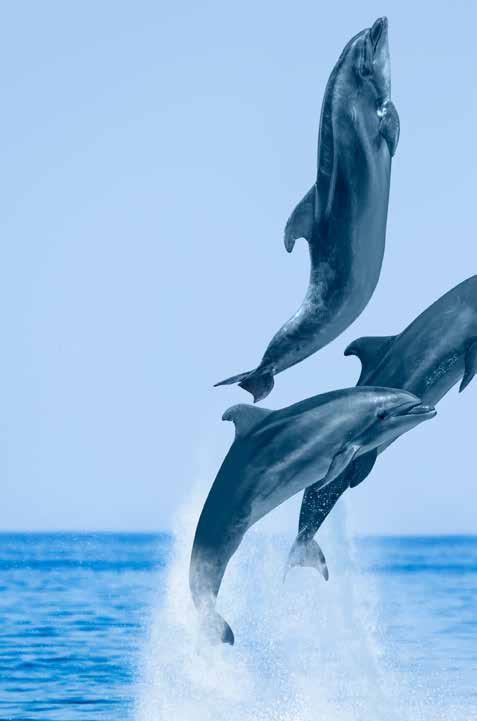
1 minute read
Sarasota Dolphin Research Program
WHAT WE DO
Our four-decades plus study of the Sarasota dolphin community continues. Studying dolphins throughout the seasons and throughout their lives, has helped us know how to protect them.
Advertisement
In 1970, the question was “do they reside here, or do they just pass through?” Now the questions are more complex as we study a wild dolphin community in what has become a natural laboratory.
Pioneering the use of systematic long-term dolphin surveys, we have learned about dolphin social behavior and habitat needs. This work continues year round.
We have also led on field research to help determine the natural and humancaused threats to dolphin lives and health. Our international team of veterinarians and researchers collaborates to conducts health assessments as warranted by scientific and management needs, and the results are shared widely. The health assessments have helped to identify the impact on pollution on dolphins by comparison with other sites. They also advance veterinary knowledge of how to treat sick dolphins, in the wild and in captivity.
We believe we have the responsibility to rescue individual dolphins that need our help when physically endangered by human causes.
Our communication and acoustic experiments expand our understanding of dolphin ecology and conservation needs.

As part of the research effort, SDRP help extends nationally and internationally, and the SDRP is a training ground for biologists and conservation scientist from around the world.
We also test new gear and techniques that assist dolphin and whale researchers and rescuers world-wide. Part of this effort includes tracking the movements of dolphins and whales with satellitelinked transmitters. We study their movements to collect transmitted data on dive patterns, and we test tag and attachment designs to make them safer and more effective.

A dolphin’s locations in the Sarasota Bay study area during one week. Each dot represents a location reported via satellite-linked tag. The quality of the data received via satellites may vary, so that some locations are less accurate (and sometimes even appear to be on shore).









